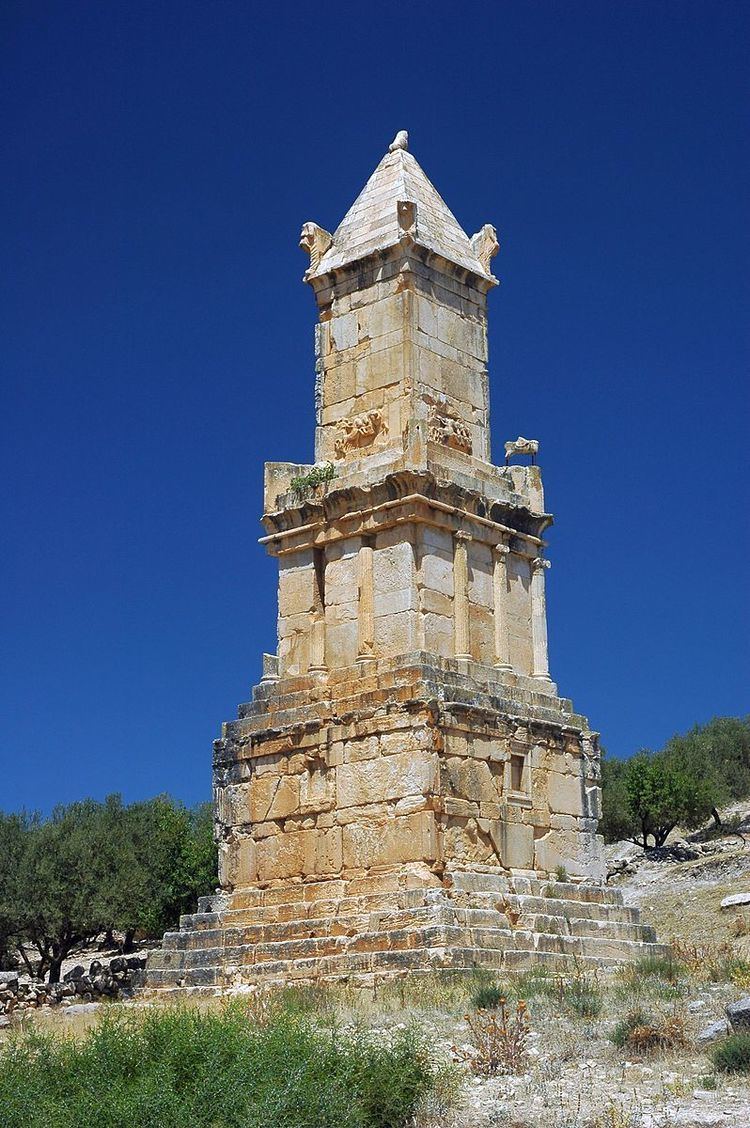Material Limestone Present location British Museum, London | Created 146 BC Identification 1852,0305.1-2 | |
 | ||
Size 69 cm high and 207 cm wide | ||
The Punic-Libyan Inscription is an important ancient bilingual inscription that played a significant role in deciphering the Libyan language. The inscription once formed part of the Mausoleum of Ateban at Dougga in Tunisia, before it was removed in the mid nineteenth century and taken to London, where it is now in the British Museum's ancient Middle Eastern collection.
Contents
Discovery
In 1842, Sir Thomas Reade, the British consul in Tunis, ordered the removal of this inscription from the Mausoleum of Ateban, which in the process seriously damaged the monument. Recognising the importance of the bilingual inscription in decoding the Libyan language, Reade had it immediately dispatched to London for the 'benefit of science'.
Description
The Mausoleum of Ateban was built in the second century BC by the inhabitants of Dougga in remembrance of an important Numidian prince or dignitary. Some have conjectured that it was built for Massinissa, King of Numidia. A limestone frieze with bilingual script was installed on the podium of the mausoleum. The left half of the inscription was engraved in the Punic language, the other half in Libyan. The bilingual nature of the inscription made it possible for scholars to decode the Libyan alphabet and script, which was written right-to-left.
Translation of the Inscription
A modern translation of the inscription indicates that the tomb was dedicated to Ateban, the son of Iepmatath and Palu. According to the most recent research, the names cited in the inscription refer to the monument's architect and the representatives of different professions involved in its construction.
